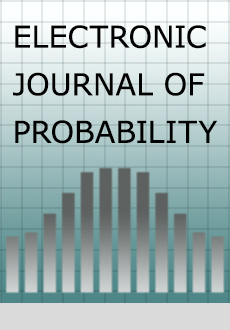Abstract
For $d \geq 2$ and $n \in \mathbb{N} $, let $\mathsf{W} _n$ denote the uniform law on self-avoiding walks beginning at the origin in the integer lattice $\mathbb{Z} ^d$, and write $\Gamma $ for a $\mathsf{W} _n$-distributed walk. We show that the closing probability $\mathsf{W} _n \big (\vert \vert \Gamma _n \vert \vert = 1 \big )$ that $\Gamma $’s endpoint neighbours the origin is at most $n^{-4/7 + o(1)}$ for a positive density set of odd $n$ in dimension $d = 2$. This result is proved using the snake method, a general technique for proving closing probability upper bounds, which originated in [3] and was made explicit in [8]. Our conclusion is reached by applying the snake method in unison with a polygon joining technique whose use was initiated by Madras in [13].
Citation
Alan Hammond. "On self-avoiding polygons and walks: the snake method via polygon joining." Electron. J. Probab. 24 1 - 43, 2019. https://doi.org/10.1214/18-EJP249
Information





